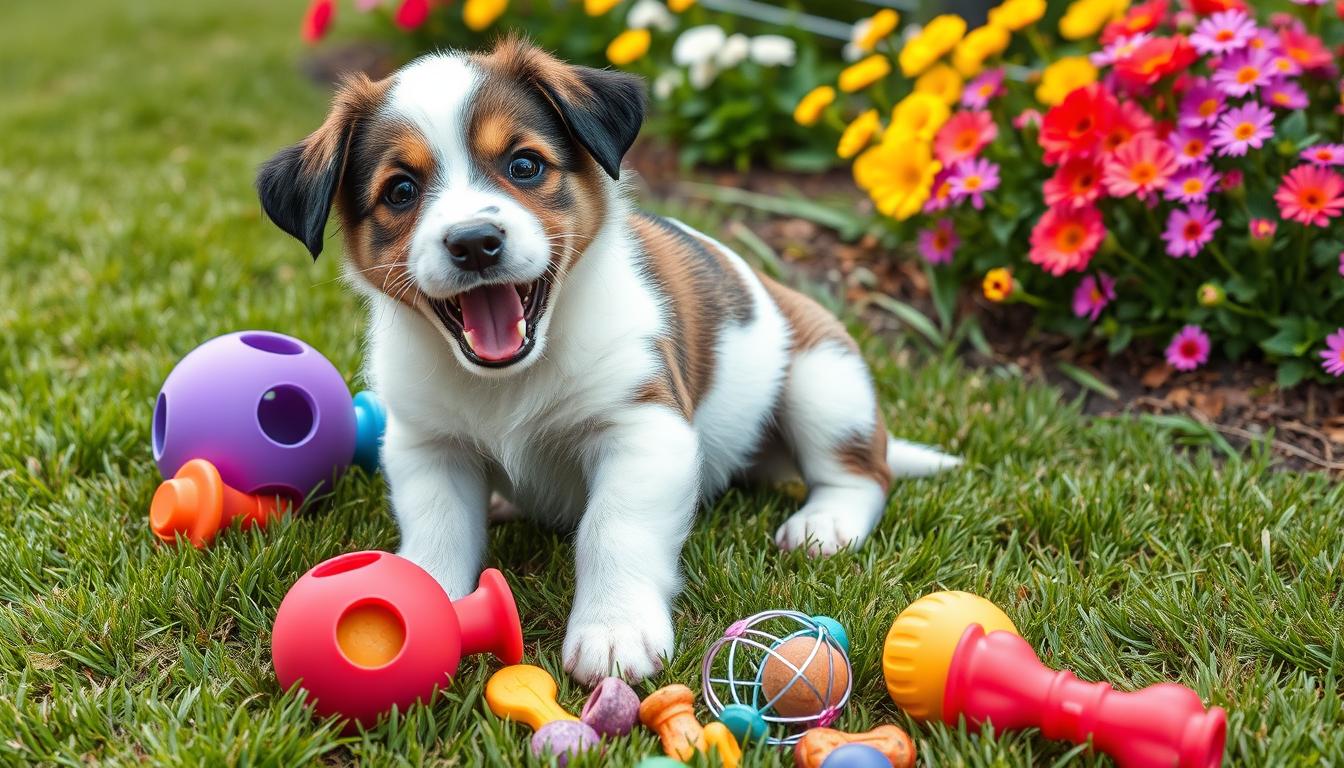Ever wondered why your puppy can’t seem to focus on training for more than a few seconds? If your dog’s attention span feels almost non-existent, you’re not alone, and there’s a solution!
When you bring your new puppy home, you can start basic obedience training like “sit,” “stay,” and “leave it” almost immediately. However, it’s crucial to understand that your puppy’s attention span might be as short as three seconds. Training success is significantly tied to how well you can catch and maintain their focus.
Effective techniques tailored to a distractible dog can make a significant difference. Using positive reinforcement, timing treats perfectly, and ensuring no negative associations with their name are key to boosting your dog’s self-esteem and motivation. Also, consider high-value treats like dried liver, chicken, cheese, and fish jerky to keep them engaged.
Remember, short training sessions – around 3 to 4 minutes per skill session – followed by play can not only improve obedience training for puppies but also enhance memory retention and strengthen your bond with your dog. Dive in to discover these detailed puppy training attention span tips!
Understanding Your Dog’s Attention Span
Understanding your dog’s attention span is key for good training. Puppies have short attention spans and get distracted easily. This can make training tough, especially when they get sidetracked by simple things.
Even adult dogs can have short attention spans. Knowing this helps set realistic goals for training. It ensures you tailor sessions to meet their needs, keeping training sessions productive and fun.
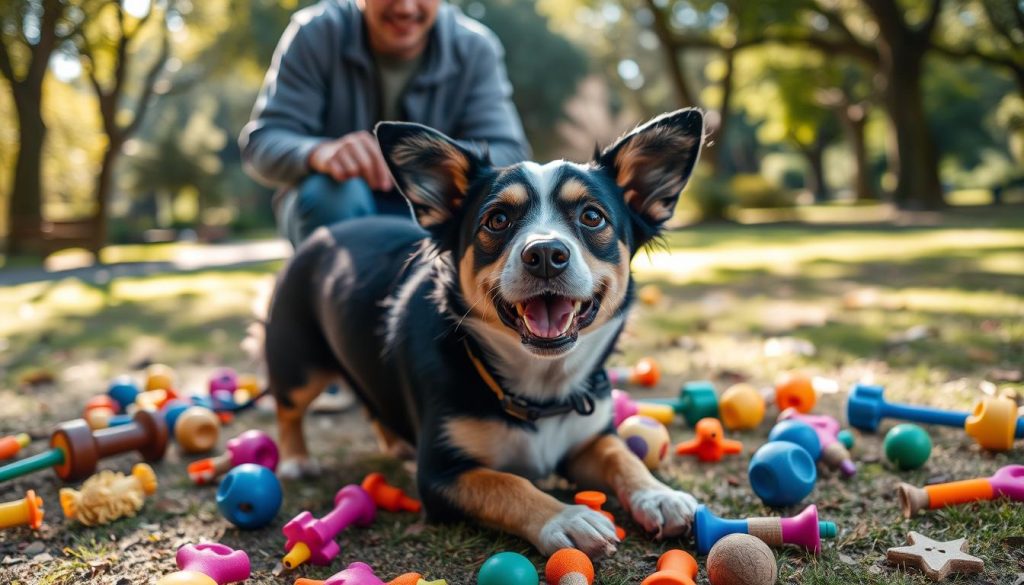
Quick Recommendation : Our blog is filled with tips , tricks, and methods for training your dog. If you would like to attend a Free Dog Training Workshop, we recommend the K9 Training Institute , give it a try.
Dogs need consistency to feel secure and learn well. Consistent training builds trust and makes their world predictable. Using the same commands helps them learn faster and feel more secure.
Dogs learn best in short, focused sessions. Training for 5-15 minutes at a time works best. Adding these sessions to play and walks boosts their learning. Training daily, focusing on one command at a time, keeps them engaged and learning.
The Importance of Positive Reinforcement
Positive reinforcement training is key in shaping your dog’s behavior. It uses rewards to encourage good actions. This approach keeps your dog motivated and focused.
Using different rewards like treats, praise, and play helps highlight good behaviors. Some dogs love food, while others prefer toys or praise. Training sessions should be short, lasting between five to fifteen minutes.
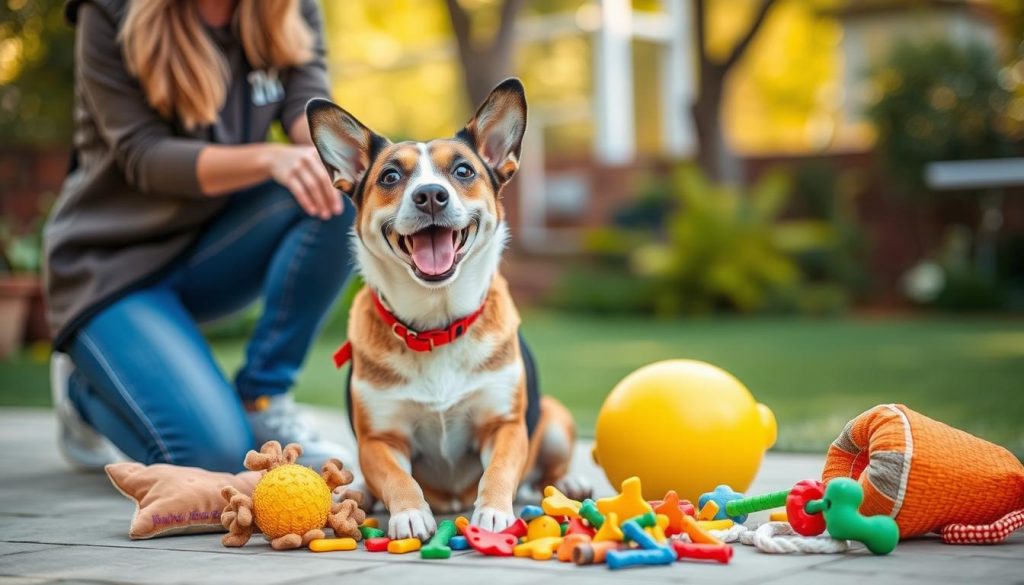
Quick Recommendation : Our blog is filled with tips , tricks, and methods for training your dog. If you would like to attend a Free Dog Training Workshop, we recommend the K9 Training Institute , give it a try.
As your dog learns, start using praise or toys instead of treats. This helps them learn without always expecting food. A consistent routine with clear commands makes training more effective. A confident dog is a happy dog, and positive training boosts their confidence.
Setting Realistic Training Goals
To start effective dog training, understand your dog’s learning style. Setting realistic goals helps avoid frustration and boosts confidence for both you and your dog. Begin with short training times, like 5 seconds, and increase to 10, 15, and more as your dog gets better.
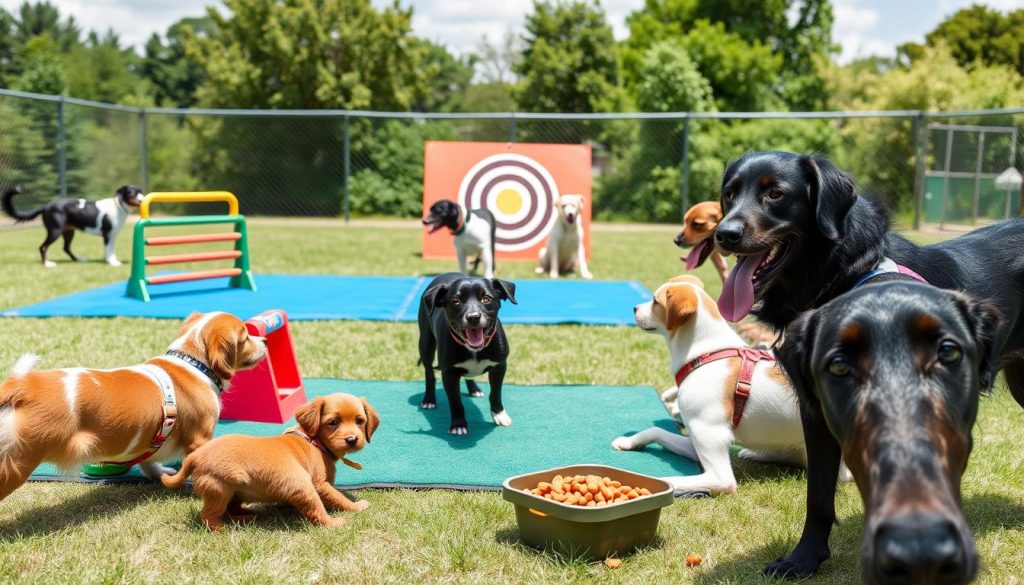
Quick Recommendation : Our blog is filled with tips , tricks, and methods for training your dog. If you would like to attend a Free Dog Training Workshop, we recommend the K9 Training Institute , give it a try.
Dogs, especially puppies, have short attention spans. Make training fun and engaging. Use patience, consistency, and positive rewards to help your dog learn. Treats or praise for good behavior will keep them motivated.
Basic obedience and commands are essential for a strong bond. Everyone in the household should use the same commands. Train indoors first, where it’s comfortable and quiet, then move to new places.
Early socialization is also crucial. It helps prevent behavioral issues, builds confidence, and prepares dogs for new experiences. Training can work well with puppies or adult dogs, with the right approach and effort.
Utilizing Short and Frequent Training Sessions
Training your dog can be easy with short sessions all day. Studies say keep them brief, about 3 to 5 minutes. This is key for puppies and young dogs with short attention spans. Frequent training keeps your dog alert and focused.
Consistency is crucial; train your dog every day, even for just a few minutes. Try to have 2-3 sessions a day, mixing them into walks or playtime. This strengthens your bond and reinforces good behaviors.
To make sessions fun and effective, use high-value treats and mix up rewards. Add play, end on a positive note, and show excitement. Tailor sessions to your dog’s age, breed, and attention span for better results.
Training daily makes your dog respond to commands in different situations. It’s practical and boosts learning. Professional trainers offer in-home or virtual lessons for busy owners. For more tips and support, download “The Ultimate Dog Training Starter Kit” or visit www.happywithdogs.com.
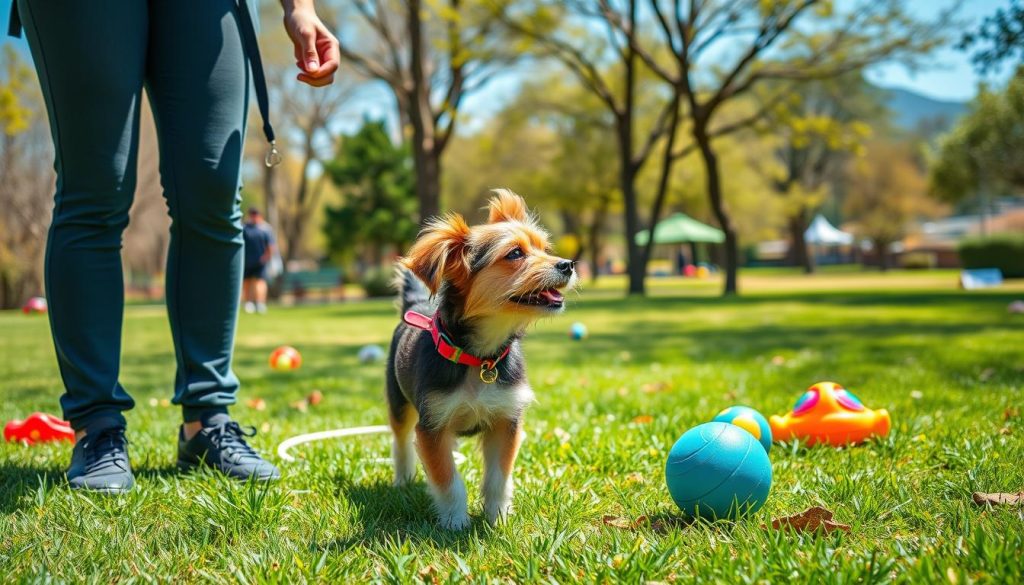
Quick Recommendation : Our blog is filled with tips , tricks, and methods for training your dog. If you would like to attend a Free Dog Training Workshop, we recommend the K9 Training Institute , give it a try.
Creating a Positive Association with Your Dog’s Name
Teaching your dog their name is key, especially if they get distracted easily. It’s important to use their name only for good things, like treats. This way, they won’t get confused and think their name is bad.
To train them well, say their name happily and give them treats. This makes them love hearing their name. Try saying their name and giving them a treat 10 times in one session.
Training should happen every day, or even twice a day, to help them learn fast. If your dog is really hard to focus, train them more often for a few weeks. Change where you train and how you say their name to make it more interesting.
Make sure they can hear their name from different places and distances. Say their name once and wait 30 seconds before saying it again. This helps them focus right away. Always make their name a happy thing, so they always respond with excitement.
Mastering the “Watch Me” Command
Teaching your dog to respond to the “watch me” command can change your training sessions. Start by rewarding your dog for looking at you when you call their name. Use treats to draw their gaze to your face and praise them.
Once your dog gets used to looking at you, you can use “watch me” or “look” as cues. The goal is to keep their eyes on you, which is key for giving instructions and managing distractions. Using the same words like “look” or “watch me” helps get their full attention.
Many dogs see eye contact as a sign of love and affection. It can even release oxytocin, the love hormone, strengthening your bond. Some dogs might find eye contact stressful, but others enjoy it as a sign of love.
Practice the “watch me” command in different places, adding distractions to improve your dog’s focus. Offer choices and reward them for looking at you. Over time, your dog will learn to focus on you even with distractions.
This training is great for everyday activities and can improve your training sessions. It’s important to use these commands consistently in various places. This ensures your dog stays focused and attentive, building a stronger bond with you.
Overcoming Distractions During Training
Training dogs with distractions needs a clear plan and patience. Start in places with some distractions and add more as you go. This way, your dog will stay focused no matter where you are.
To keep your dog focused, practice commands near toys or other animals. Begin in places your dog knows well, like home. Then, add more distractions to make training harder. Start with simple tasks to help your dog feel confident and focused.
Positive rewards are key to keeping your dog’s attention. Use treats like chicken or liver to motivate them. Being consistent and rewarding good behavior helps a lot. Many dogs have shown great improvement in their focus thanks to Bolt Dog Training.
Training sessions should be short, especially for puppies. Do them when your dog is not too active. As your dog ignores distractions for longer, celebrate their progress. This keeps them motivated and strengthens your bond.
Recognizing and Addressing Training Fatigue
It’s important to know when your dog is tired from training. Look for signs like losing interest, slow responses, or ignoring treats. Physical signs like yawning and sneezing also mean they’re exhausted.
Watching your dog’s behavior during training is key. If they struggle or seem frustrated, it’s time for a break. Ending the session early keeps training positive for them.
Training sessions should be short, lasting from 10 seconds to two minutes. Some dogs can focus for up to 15 minutes. Short sessions throughout the day keep them engaged and prevent exhaustion. Remember, it’s better to have quality training than a long, tiring session.
By noticing these signs and adjusting your training, your dog will stay excited and focused. This makes training fun for both of you, strengthening your bond and improving results.
Following Training with Play Sessions
Play sessions after training are a great way to improve your dog’s learning. They create a positive loop that makes lessons stick. This boosts your dog’s memory through fun play.
Play after training makes what your dog learned stick better. It also cuts down on stress. Short training, 2 to 10 minutes, is best. Then, playtime reinforces what they’ve learned.
Using different training methods, like clicker training, is key. For example, heeling drills followed by fetch help a lot. This mix of work and fun is key for memory.
Keep training sessions short and consistent to keep your dog’s focus. Stop when they still want to learn, usually around 5 minutes. Then, a short playtime strengthens your bond and makes training more effective.
Conclusion
Training a dog with a short attention span can really help your dog listen better and strengthen your bond. Knowing how long your dog can focus is key. Short, frequent training sessions of 5 to 10 minutes work best. This way, you keep their attention and help them learn faster.
Using positive rewards like treats, praise, or toys is very important. The Humane Society of the United States agrees. It makes training fun and rewarding for your dog. Also, being consistent with commands and rewards helps your dog understand better.
Keeping your dog’s mind active with puzzle toys and games is great too. Celebrating small victories boosts their confidence and keeps them eager to learn. The American Kennel Club says socializing your dog early helps prevent bad behavior later. Positive interactions help your dog feel safe and supported during training.
In summary, short, positive training sessions and consistency are key. Clicker training is also a good method for teaching commands. By following these tips, you help your dog grow and enjoy a happy, balanced relationship with you.
Quick Recommendation : Our blog is filled with tips , tricks, and methods for training your dog. If you would like to attend a Free Dog Training Workshop, we recommend the K9 Training Institute , give it a try.

